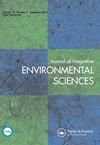一个多功能的悉尼巷道:跨学科与它有什么关系?
IF 3.5
4区 环境科学与生态学
Q3 ENVIRONMENTAL SCIENCES
Journal of Integrative Environmental Sciences
Pub Date : 2017-01-01
DOI:10.1080/1943815X.2017.1351994
引用次数: 0
摘要
学术界和工业界越来越认识到对多功能城市空间的需求。但我们如何满足这种需求呢?新兴的回应指向了跨学科的前景。我们通过分析跨学科实践在悉尼巷道成功转化为多功能城市空间中的作用,批判性地反思了这一说法。我们在整个项目阶段追踪不同学科实践的共存,以更好地理解跨学科对其成功的贡献。从我们的分析中出现了一个尝试性的解释框架,并提供了一个能够将这条巷道转变为多功能空间的有利条件、学科动态和策略。有利的条件是市政当局将对环境的关注制度化;组织变革计划确保了项目独立于资本预算;一个有环保意识的社区团体发挥了核心作用。观察到的学科动态是多种多样的。规划和设计是跨学科的,但实施和维护不是。最后,从业者使用各种策略将参与者聚集在一起:他们了解组织的政治性质;他们认识到项目中涉及的不同类型的参与者,然后使用适当的语言来交流想法,管理风险和期望。本文章由计算机程序翻译,如有差异,请以英文原文为准。
A multifunctional Sydney laneway: what’s transdisciplinarity got to do with it?
Abstract Academia and industry increasingly recognise the need for multifunctional urban spaces. But how do we meet this need? Emerging responses point to the promise of transdisciplinarity. We critically reflect on this claim by analysing the role of transdisciplinary practice in the successful conversion of a Sydney laneway into a multifunctional urban space. We trace the co-existence of different disciplinary practices throughout the project stages, to better understand how much transdisciplinarity contributed to its success. A tentative explanatory framework emerges from our analysis and is offered to map the enabling conditions, disciplinary dynamics and strategies that allowed this laneway’s transformation into a multifunctional space. Enabling conditions were the municipality had institutionalised a concern for the environment; an organisational change programme ensured the project’s independence from the capital budget; and an environmentally aware community group played a core role. The disciplinary dynamics observed were diverse. Planning and design were transdisciplinary, but implementation and maintenance were not. Finally, practitioners used various strategies to bring actors together: they understood the political nature of the organisation; they recognised the different types of actors involved in the project, and then used appropriate language to communicate ideas and to manage risks and expectations.
求助全文
通过发布文献求助,成功后即可免费获取论文全文。
去求助
来源期刊

Journal of Integrative Environmental Sciences
ENVIRONMENTAL SCIENCES-
CiteScore
3.90
自引率
0.00%
发文量
13
审稿时长
>12 weeks
期刊介绍:
Journal of Integrative Environmental Sciences (JIES) provides a stimulating, informative and critical forum for intellectual debate on significant environmental issues. It brings together perspectives from a wide range of disciplines and methodologies in both the social and natural sciences in an effort to develop integrative knowledge about the processes responsible for environmental change. The Journal is especially concerned with the relationships between science, society and policy and one of its key aims is to advance understanding of the theory and practice of sustainable development.
 求助内容:
求助内容: 应助结果提醒方式:
应助结果提醒方式:


